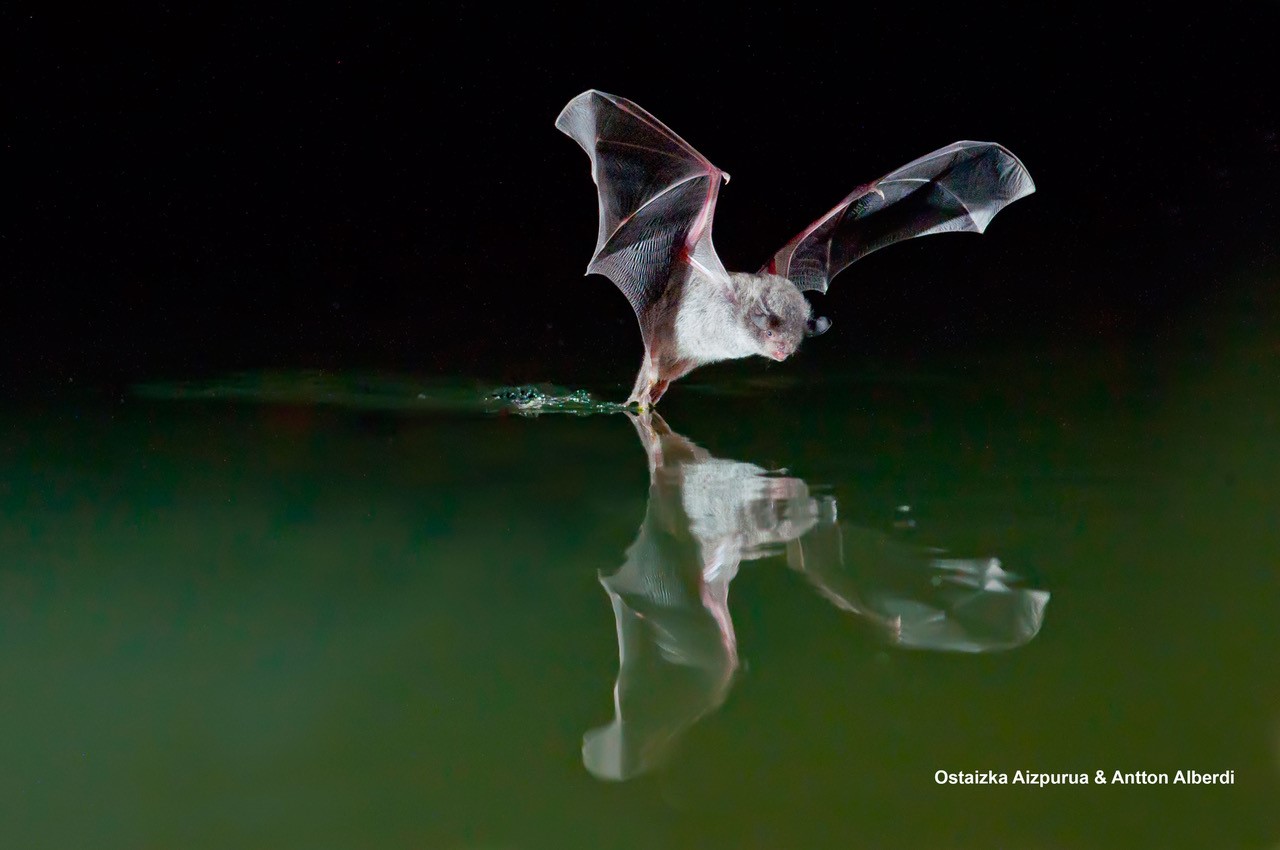Dietary shifts in fishing bats enabled by gut microbes
Recent findings indicate a mutualistic relationship between fishing bats and their gut microbes, which has enabled a niche dietary shift to include fish. Researchers from the Center for Evolutionary Hologenomics have found that the four known bat species that hunt for fish have unique gut microbiome compositions in comparison to bat species that live off the common insect-based diets.

In a newly published research paper in Animal Microbiome, Assistant Professor Ostaizka Aizpurua Arrieta, PhD fellow Lasse Nyholm Jessen from the Center for Evolutionary Hologenomics and colleagues have uncovered previously unknown microbial differences between the bats that fish and those that do not.
Comparing the four bat species that hunt for fish with eleven insect-eating bat species have revealed that the fishing bat species all have a gut microbiome composition that is distinct to those of their insect-eating counterparts The findings of the research paper indicate that the gut microbiome has played an active role in enabling the four fishing bat species to shift dietary habits to include fish.
“We already know that fishing requires a number of morphological, sensory and behavioural adaptations in bats to detect, hunt and handle fish,” lead author Ostaizka Aizpurua says. "In this study we observed that fishing also entails physiological adaptations, which are obtained by changes in the intestinal microbiota. This suggests an active contribution of microorganisms to facilitate changes in the vertebrate diet.”
Unique digestive abilities
What is at stake then, is the fact that the bat species living purely off insects cannot simply include fish into their diet, should their traditional food source become sparse. The composition of the gut microbiomes must follow suit, and this is what sets the fishing bats of the study apart. Their gut microbiomes have evolved to enable them to digest and obtain nutrients from fish.
“We observed that the bacterial taxa enriched in fishing bats are common bacteria found in the intestinal tract of fish, suggesting that the unique bacteria of fishing bats were likely ancestrally acquired from their fish prey. Moreover, these characteristic bacteria of fishing bats likely provide nutritional benefits to them, by synthesizing essential compounds and facilitating the metabolism of complex carbohydrates and lipids acquired from fish,” Ostaizka Aizpurua says.
New means of conservation
The study’s findings indicate that all four bat species, independently of each other, have acquired bacteria that have enabled them to obtain nutrients from fish. Remarkably, these bacteria are often found in the bats primary prey fish, and as such a diet including fish may in fact change the gut microbe composition in a way that enables them to eat fish in the first place.
Looking forward, knowing that certain bat species have the ability to consume and digest fish, opens up possibilities to care for the bats that hunt for fish. An example of this is the long-fingered bat Myotis Capaccinii. The research paper has studied colonies of this bat that do not hunt for fish, yet still their gut microbiomes enable them to benefit from including it into their diet, in contrast with the other insect-eating bat species of the study. The study’s findings thus enable new means of conservation.
“The fact that all individuals of long-fingered bat can efficiently consume and digest fish suggests that an increase in the availability of ponds with small surface-feeder fish could be a promising conservation action for this species, which is classified as critically endangered in the study area,” Ostaizka Aizpurua says.
Read the full research paper in Animal Microbiome here.
